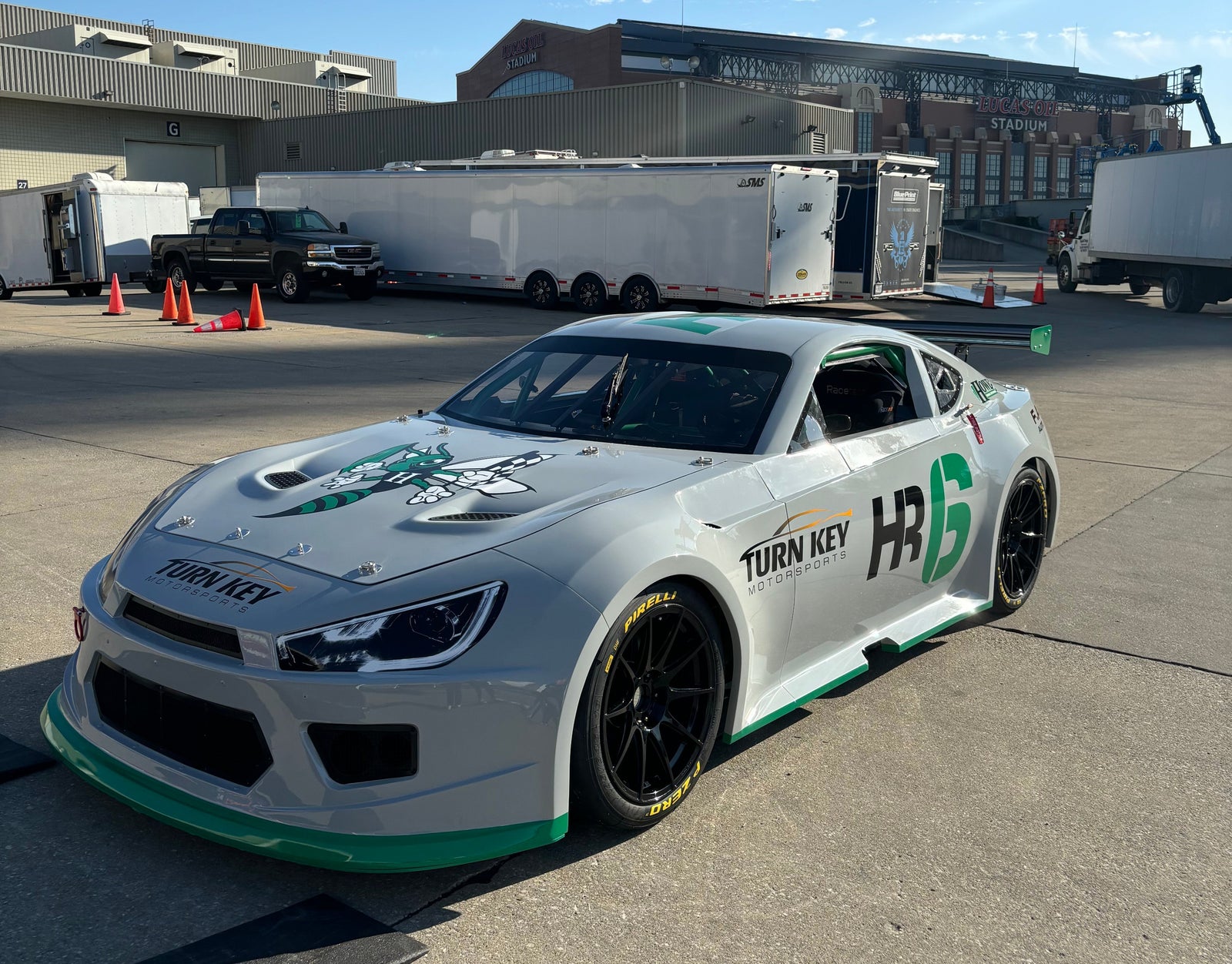Your Cart is Empty
Please call or email howesales@howeracing.com if you have issues placing international orders.
Please call or email howesales@howeracing.com if you have issues placing international orders.
UPDATED 6-11-25
1. What is an HR6?
It is a forward-looking car designed for road racing, meant to bridge the gap between compact sports cars and professionally built race cars. Engineered with readily available aftermarket racing components, the HR6 aims to appeal to club and pro-level racers.
2. Why did Howe make this car?
To appeal to road racing enthusiasts with higher performance than spec classes and lower cost than TA2-type cars.
3. How will the HR6 affect TA2?
Howe is committed to TA2 and similar cars worldwide, but the HR6 will create a less intimidating gateway into TA2 for those unfamiliar with tube-frame cars.
4. What is this Body?
The body is an original without nostalgia or brand allegiance; we call it "Kato." A name we chose for its association with the racing nickname of Howe founder Ed Howe. The body merges modern compact sports car dimensions with timeless U.S. muscle car accents. It is a Howe design, and Howe owns the molds, so manufacturing can move anywhere that meets the cost and logistical requirements.
5. Where can you race an HR6?
The chassis construction follows FIA and SCCA guidelines for participating in race training, club, and track day events until a category forms. Multiple HR6s are slated to make their race series debut in the GT class of Trans Am at Mid-Ohio in June 2025, where they will be eligible for competition until there are enough HR6s to compete in their own class.
6. How much will it cost?
As introduced at PRI (excluding paint, Pirelli tires, driver cooling system, and seat) with a five-speed Tremec transmission, a complete car is under $120,000. After market testing, we changed the standard spec to include a 6-speed Sadev sequential trans, increasing the price to $133,000.
7. How can I purchase an HR6?
The first three cars will race on June 21st at Mid-Ohio. Delivery on new orders is currently estimated at 8 weeks. You can fill out and submit an HR6 order form, available on our website or by request, and then place a 50% deposit to begin production of your car.
8. What is the Engine Platform?
It is a 4.3-liter GM production V6 engine that has been upfitted for racing with port injection, cam, and a dry sump oil system. It produces 400 horsepower and 365 ft-lbs of torque.
9. Will a V8 fit, or can I order one that would?
A V8 would not fit without extensive and potentially dangerous modifications. The HR6 does not have the space or cooling capacity for a V8, and doing so will exceed the drivetrain specification and could create excessive safety risks.
10. Who will service HR6 Engines?
Turn-Key Automotive will complete and service all HR6 engines in Oxford, Michigan. They are best known for their work producing the COPO Camaro for Chevrolet. They are not associated with Turn-Key Automotive in Myrtle Beach, South Carolina, or Turn-Key Industries in Magnolia, Texas.
11. Will the ECU be locked?
The first cars had unlocked Holley ECUs, but now in production, the tune is locked and regulated by inspection or trade-out.
12. What Tires will the HR6 use?
Cars competing in Trans Am are required to run Pirelli race tires. However, early testing has been on the Maxxis Victra RC1. We expect each regional organization to specify different but similar tires, but any 265/35-R18 will fit.
13. What wheels will fit the HR6?
The stud pattern is 5 x 120mm. Each car will have Howe spec monoblock forged aluminum wheels available in black or bronze.
14. Can I buy a body or engine separately?
Initially, you must purchase an HR6 complete. HR6 owners can then buy replacement parts, including engines and bodies, by referencing their chassis serial number.
15. Will there be dealers for the HR6?
Any Howe dealer can sell an HR6 and the related components; however, bodies and engines will ship directly from Howe.
16. Can I order one with different components?
All HR6 cars will be identical within each international region except for the seat, color, and instruments. HR6 owners can make changes after purchase, which could make the car ineligible for category competition.
17. What are the transmission options?
The HR6's standard transmission is a Sadev 6-speed sequential. As a more affordable option, it is available with a Tremec TKX 5-speed H pattern.
18. Why did Howe introduce a new road racing car, not an oval track late model?
The current asphalt oval track environment near Howe can only support a limited number of small car builders. Howe decided to diversify rather than lay off staff. Making sound business decisions allows Howe to continue producing a wide range of racing products, including those for oval tracks.
